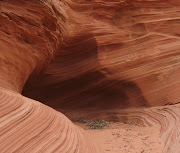
High dungeon Drama and good old fashioned sturm & drang surrounds the viewer to feel the raw power of angst and despair coupled with the majestic history of a blood red sky from the 1883 volcanic eruption of Krakatoa is contained on four canvasses the same subject matter are pieces of Norwegian artistry. Stunning in its inception by a tormented eighteenth century painter, Edvard Munch, his works of the same piece in multi-media formats of pastels, earning him a place in the pantheon of world artists was stolen (again) from an Oslo museum then damaged by the thugs thieves, later found in a closet, gets carted off to the chagrined rescue curators who are forced to leave a left corner irreparably damaged for fear of further desecration before a royal show where the world can now pay homage anew.
.jpg)

 The Scream (1893-1910) is part of a collection of works by Munch meant to memorialize life, love, fear, death and melancholy in a series he tilted, The Frieze of Life. His other works with arresting names include Despair, Anxiety, The Sick Child, Ashes (1894) and Love and Pain. After returning from Germany, the artist suffered hallucinations, gulped spirits by the bottle and produced a legacy of work that delved into the inner soul. After months of intensive treatment after his deep embrace of Nietzsche and Dostoevsky, he found his Happy Place and less trauma inducing subject matter to paint. Then the Nazis proclaimed his work as degenerate having Munch's art removed from German museums. Wonder what he would think of his visage being on the 1000 Kroner note in Norway today. Edvard passed on to the next life in January of 1944, at the age of 80, but not before leaving this stirring quote:
The Scream (1893-1910) is part of a collection of works by Munch meant to memorialize life, love, fear, death and melancholy in a series he tilted, The Frieze of Life. His other works with arresting names include Despair, Anxiety, The Sick Child, Ashes (1894) and Love and Pain. After returning from Germany, the artist suffered hallucinations, gulped spirits by the bottle and produced a legacy of work that delved into the inner soul. After months of intensive treatment after his deep embrace of Nietzsche and Dostoevsky, he found his Happy Place and less trauma inducing subject matter to paint. Then the Nazis proclaimed his work as degenerate having Munch's art removed from German museums. Wonder what he would think of his visage being on the 1000 Kroner note in Norway today. Edvard passed on to the next life in January of 1944, at the age of 80, but not before leaving this stirring quote:
 The city of Oslo received all of Munch's bequeathed art and from the museums with his collections have come some of the most brazen art thefts. On the opening day of the 1994 Winter Olympiad in Lillehammer, Norway four thieves took a precious copy of one of Munch's paintings of The Scream. Classical art that becomes a signature piece for modern culture is a rare feat. Then in 2004, the unthinkable occurred - his "Madonna" (1894-1895) and pastel version of "The Scream" were stripped from the wall, unceremoniously walked off the property into a waiting vehicles pictured here. Yikes, that's millions of US dollars in his grubby hands.
The city of Oslo received all of Munch's bequeathed art and from the museums with his collections have come some of the most brazen art thefts. On the opening day of the 1994 Winter Olympiad in Lillehammer, Norway four thieves took a precious copy of one of Munch's paintings of The Scream. Classical art that becomes a signature piece for modern culture is a rare feat. Then in 2004, the unthinkable occurred - his "Madonna" (1894-1895) and pastel version of "The Scream" were stripped from the wall, unceremoniously walked off the property into a waiting vehicles pictured here. Yikes, that's millions of US dollars in his grubby hands.
Each time the paintings are recovered by police, sometimes years later, but at a terrible cost. After the exhibit, "The Scream and Madonna Revisited" concludes on 26 September, "Madonna" will have further restoration work.

Now in paperback is an award-winning biography, Edvard Munch: Behind The Scream from accomplished writer, Sue Prideaux. She draws heavily upon Munch own diaries which do not shy away from that which bedeviled his human soul and erupted onto the canvas. So famous is The Scream artwork, it has even shown up on episodes of The Simpsons and in animé worldwide.
.jpg)

Madonna (1894/1895) and The Sick Child (1907)
 The Scream (1893-1910) is part of a collection of works by Munch meant to memorialize life, love, fear, death and melancholy in a series he tilted, The Frieze of Life. His other works with arresting names include Despair, Anxiety, The Sick Child, Ashes (1894) and Love and Pain. After returning from Germany, the artist suffered hallucinations, gulped spirits by the bottle and produced a legacy of work that delved into the inner soul. After months of intensive treatment after his deep embrace of Nietzsche and Dostoevsky, he found his Happy Place and less trauma inducing subject matter to paint. Then the Nazis proclaimed his work as degenerate having Munch's art removed from German museums. Wonder what he would think of his visage being on the 1000 Kroner note in Norway today. Edvard passed on to the next life in January of 1944, at the age of 80, but not before leaving this stirring quote:
The Scream (1893-1910) is part of a collection of works by Munch meant to memorialize life, love, fear, death and melancholy in a series he tilted, The Frieze of Life. His other works with arresting names include Despair, Anxiety, The Sick Child, Ashes (1894) and Love and Pain. After returning from Germany, the artist suffered hallucinations, gulped spirits by the bottle and produced a legacy of work that delved into the inner soul. After months of intensive treatment after his deep embrace of Nietzsche and Dostoevsky, he found his Happy Place and less trauma inducing subject matter to paint. Then the Nazis proclaimed his work as degenerate having Munch's art removed from German museums. Wonder what he would think of his visage being on the 1000 Kroner note in Norway today. Edvard passed on to the next life in January of 1944, at the age of 80, but not before leaving this stirring quote:- "From my rotting body, flowers shall grow and I am in them and that is eternity."
- —Edvard Munch
 The city of Oslo received all of Munch's bequeathed art and from the museums with his collections have come some of the most brazen art thefts. On the opening day of the 1994 Winter Olympiad in Lillehammer, Norway four thieves took a precious copy of one of Munch's paintings of The Scream. Classical art that becomes a signature piece for modern culture is a rare feat. Then in 2004, the unthinkable occurred - his "Madonna" (1894-1895) and pastel version of "The Scream" were stripped from the wall, unceremoniously walked off the property into a waiting vehicles pictured here. Yikes, that's millions of US dollars in his grubby hands.
The city of Oslo received all of Munch's bequeathed art and from the museums with his collections have come some of the most brazen art thefts. On the opening day of the 1994 Winter Olympiad in Lillehammer, Norway four thieves took a precious copy of one of Munch's paintings of The Scream. Classical art that becomes a signature piece for modern culture is a rare feat. Then in 2004, the unthinkable occurred - his "Madonna" (1894-1895) and pastel version of "The Scream" were stripped from the wall, unceremoniously walked off the property into a waiting vehicles pictured here. Yikes, that's millions of US dollars in his grubby hands.Each time the paintings are recovered by police, sometimes years later, but at a terrible cost. After the exhibit, "The Scream and Madonna Revisited" concludes on 26 September, "Madonna" will have further restoration work.
Some 440 people, more than double the average number of visitors this time of year,
came to see the unveiling of "The Scream" and "Madonna", another Munch masterpiece stolen in the 2004 robbery, a museum official told AFP.
"The Scream", which is perhaps the most famous depiction of existential angst, depicts an individual on a bridge, hands clasped around the head and mouth wide open in an apparent yell of despair, against a backdrop of waves of red, yellow, blue and black.

Now in paperback is an award-winning biography, Edvard Munch: Behind The Scream from accomplished writer, Sue Prideaux. She draws heavily upon Munch own diaries which do not shy away from that which bedeviled his human soul and erupted onto the canvas. So famous is The Scream artwork, it has even shown up on episodes of The Simpsons and in animé worldwide.










No comments:
Post a Comment